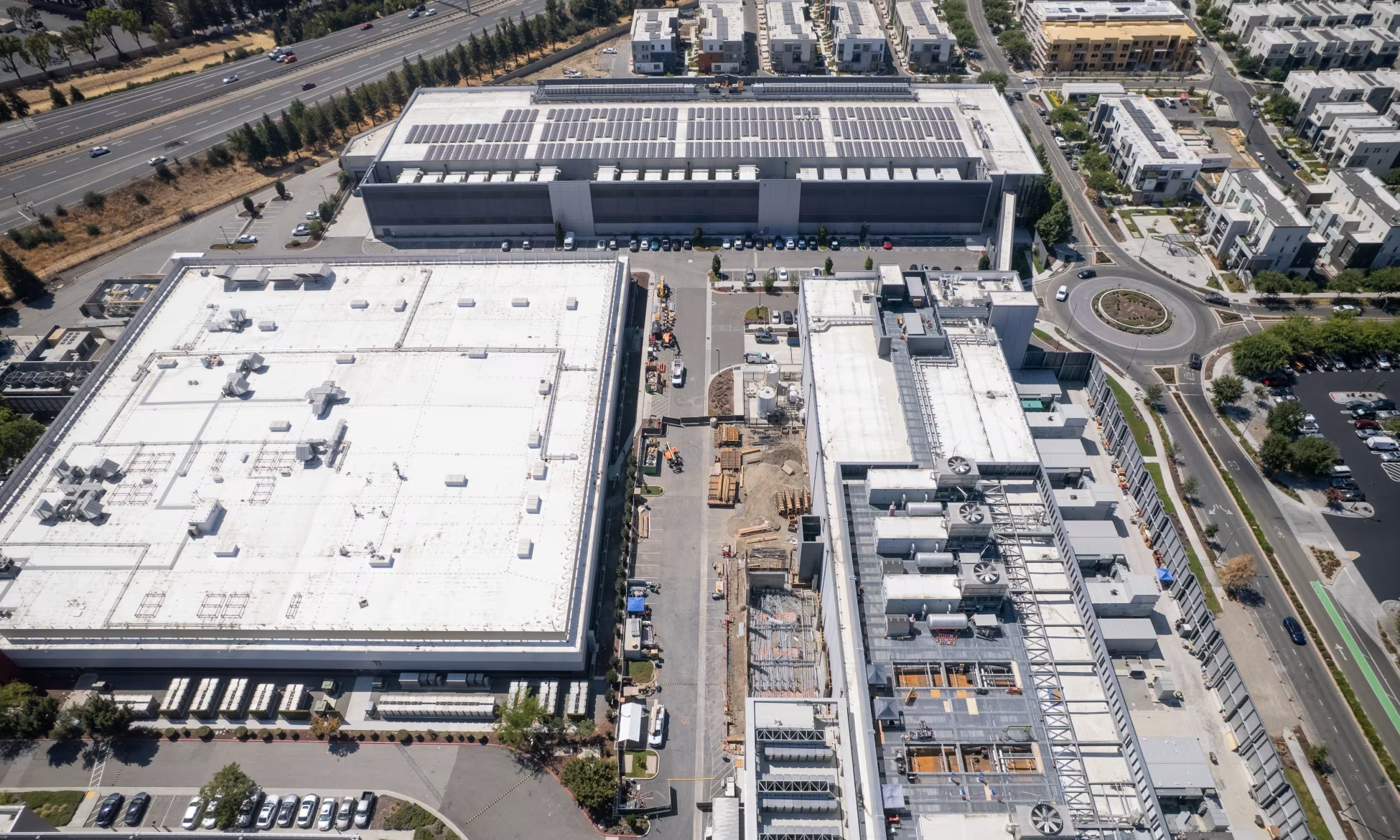
AI Data Centers, Desperate for Electricity, Are Building Their Own Power Plants
Tech companies in the AI race need power, and lots of it. They aren’t waiting around for the archaic U.S. power grid to catch up.
In West Texas, natural-gas-fired power generation is under construction as part of the $500 billion Stargate project from OpenAI and Oracle ORCL -5.28%decrease; red down pointing triangle. Gas turbines are in use at Colossus 1 and 2, the massive data centers Elon Musk’s xAI is building in Memphis, Tenn. More than a dozen Equinix EQIX 0.15%increase; green up pointing triangle data centers across the country are using fuel cells for power.
With the push for AI dominance at warp speed, the “Bring Your Own Power” boom is a quick fix for the gridlock of trying to get on the grid. It’s driving an energy Wild West that is reshaping American power.
Most tech titans would be happy to trade their DIY sourcing for the ability to plug into the electric grid. But supply-chain snarls and permitting challenges are complicating everything, and the U.S. isn’t building transmission infrastructure or power plants fast enough to meet the sudden surge in demand for electricity.
America should be adding about 80 gigawatts of new power generation capacity a year to keep pace with AI as well as cloud computing, crypto, industrial demand and electrification trends, according to consulting and technology firm ICF. It’s currently building less than 65 gigawatts. That gap alone is enough electricity to power two Manhattans during the hottest parts of summer.
Data centers have long taken power for granted, said KR Sridhar, founder and chief executive of Bloom Energy BE -1.15%decrease; red down pointing triangle, which provides fuel cells to companies that need on-site power, often in a hurry. “You build the data center. Well, you just plug it in.”
That isn’t possible anymore given the city-sized amounts of electricity needed to train AI models. One data center can devour as much electricity as 1,000 Walmart stores, and an AI search can use 10 times the amount of energy as a google search.
The growth is intense, too. The U.S. had around 522 hyperscale data centers at the end of the second quarter, which account for around 55% of global capacity, according to Synergy Research Group. Another roughly 280 are expected to come online through 2028 in the U.S.
Data centers consumed less than 2% of U.S. electricity before about 2020, but by 2028 could use as much as 12% of U.S. electricity, according to the Energy Department and Lawrence Berkeley National Lab. Utility executives compare the skyrocketing demand with rural electrification efforts or the advent of air conditioning, though much of that work happened in the years after World War II when American industry was roaring.
Share of electricity consumed by data centers in 2023, for each state
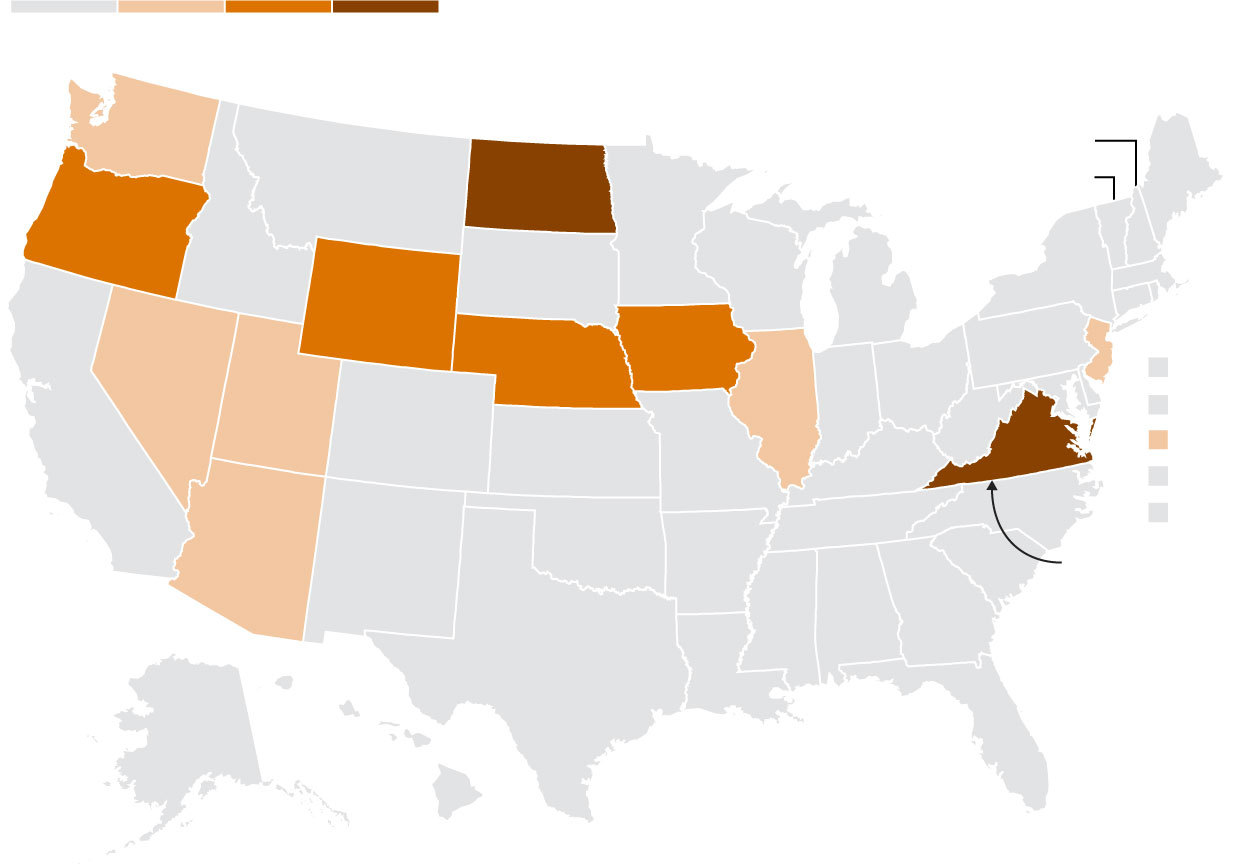
Source: Electric Power Research Institute
Danny Dougherty/THE WALL STREET JOURNAL
President Trump in January declared a national energy emergency, in part to keep the U.S. from falling behind China in the AI race. He has issued a series of related executive orders including one that aims to fast-track data-center construction and needed power infrastructure.
The U.S. appears to have a lot of catching up to do.
China will invest twice as much as the U.S. this year in power plants, storage and the grid, according to the International Energy Agency. It added about 429 gigawatts of new power generation last year, according to the think tank Climate Energy Finance, while the U.S. built about 50 gigawatts.
The country has about four times the population of the U.S., but with centralized planning avoids many of the hangups in building everything from transmission lines to power plants. Most U.S. data-center developers cited grid access as their top concern.
Project developers and utilities are trying to pick up the pace. ICF forecasts the U.S. will deliver almost 80 gigawatts of new generation starting in 2027, doubling the average pace of the past five years.
Even so, in some locations, data centers won’t be able to plug into the power grid until the 2030s because of the sheer backlog of projects and the fact that the nation’s high-voltage electric wires are running out of room.
“If the grid doesn’t have power and you need to generate compute capacity, what are your alternatives?” asked Bill Stein, executive managing director and chief investment officer with Primary Digital Infrastructure, an advisory and data-center investment platform that’s part of a joint venture financing the construction of the West Texas Stargate site.
He expects the U.S. power shortage to last around three to five years.
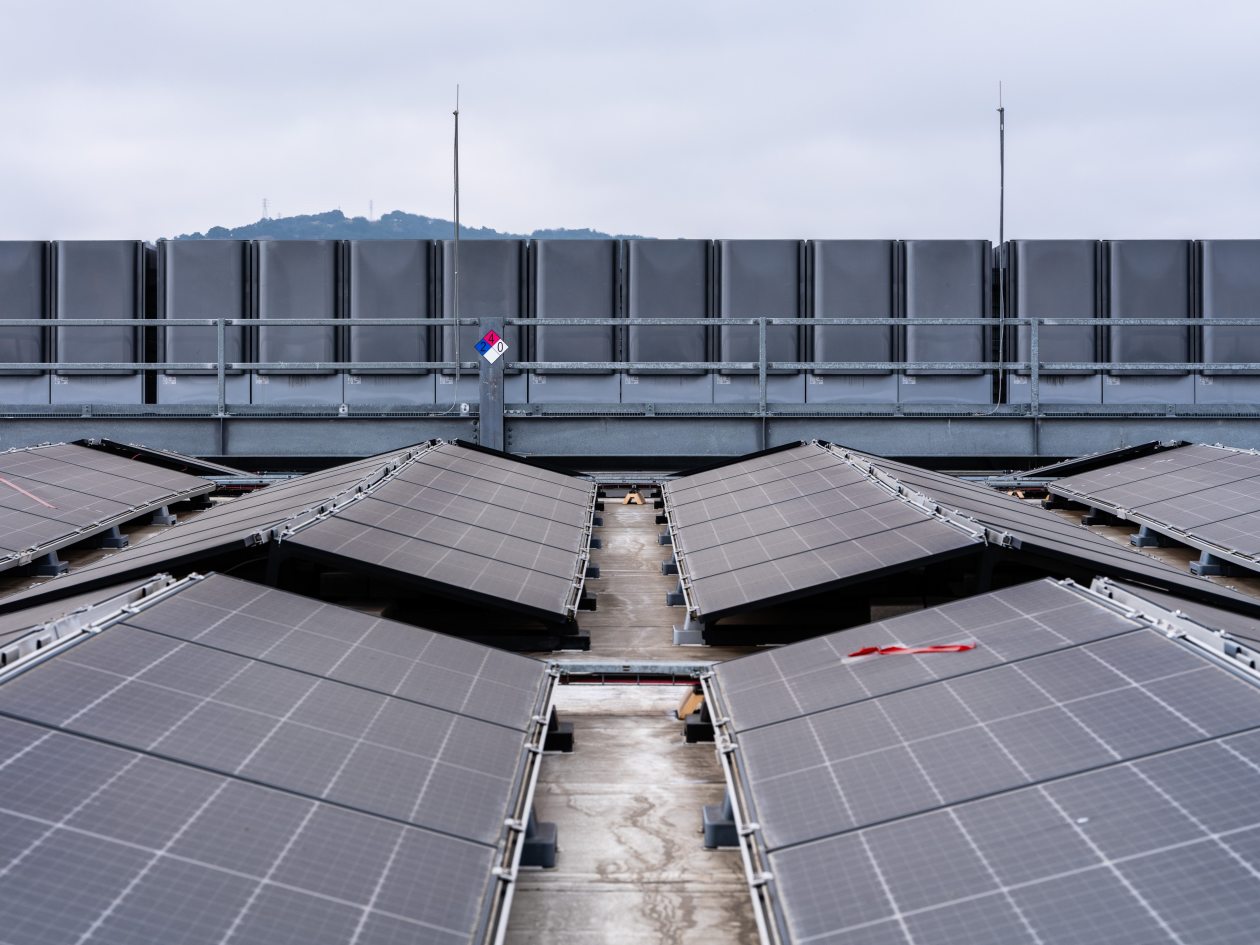
Equinix is using a mix of solar panels and fuel cells. Jungho Kim for WSJ
Waiting for the cavalry
Many of the data-center developers scrambling for electricity intend to use on-site power for a few years until the grid infrastructure can catch up. A few plan to bypass the grid indefinitely, and others expect to split the difference, using a mix of grid and on-site power.
Ultimately, most data centers and tech customers will want to connect to the grid. It offers reliability and diversification with its mix of power plants—when one power source goes down, another can pick up the slack, said Andy Power, chief executive of Digital Realty, which has 300 data centers globally. He views on-site power as a stopgap.
“We’re not in the power business,” he said. “We’re building these bridges to allow the cavalry to come up with the transmission or other pieces of the puzzle that they may need to provide power.”
It may be a while.
Data centers and high-voltage transmission lines in the continental U.S.

Data centers
Transmission lines
1,000 MW
100
Sources: Energy Department (data centers ); OpenStreetMap (transmission lines)
Danny Dougherty/THE WALL STREET JOURNAL
Planning and building large-scale power plants or expanding grid infrastructure takes years. The process, normally gummed up, is even more difficult lately. Projects of all kinds face hurdles obtaining permits, equipment shortages, a labor crunch and rising costs, exacerbated by Trump’s tariffs on steel and aluminum, as well as some copper products.
Orders for transformers began climbing just as global supply chains became snarled at the start of the Covid-19 pandemic, according to data from energy consulting firm Wood Mackenzie. Data-center demand for the equipment is up 10-fold since then. It’s expected to quintuple next year. New factories and utilities’ efforts to replace aging or damaged equipment have added to the order backlog.
Transmission construction, too, has been bogged down. The U.S. added 888 miles of new high-voltage transmission lines last year, and 450 miles the year before, according to a report from Grid Strategies. That’s down from an average of more than 900 miles a year between 2015 and 2019, and more than 1,700 miles a year on average for the five-year period before that.
As utilities push to increase supply and access, data centers are pulling in resources wherever they can, with natural gas the clear winner.
Massive turbines for large power plants have a yearslong backlog. But smaller turbines, reciprocating engines or fuel cells that also can use natural gas remain available—for now. Companies are snatching them up, adding them to data-center sites like Legos. Enough of them equal the output of utility-sized power plants or nuclear reactors.
In Memphis, xAI’s first Colossus site initially relied on smaller gas turbines to power hundreds of thousands of Nvidia graphic processing units. It now uses a mix of on-site and grid power. Colossus 2, currently under construction, will use turbines located just across the Mississippi state line and connected by a transmission line to the site. The electricity required for the sites could power hundreds of thousands of homes.
The Stargate site in West Texas will also tap natural gas to supplement its use of grid power. The campus sits on the doorstep of the Permian Basin, the country’s largest oil-and-gas field, and is expected to have a capacity of more than a gigawatt of electricity, roughly equivalent to the power San Francisco uses.
In San Jose, Calif., at a data center tucked between a Costco and a highway, Equinix produces its own power using fuel cells, which convert natural gas into electricity, and some solar panels. The site, a short drive from the headquarters of many of the tech companies propelling the AI boom, is one of 19 run by Equinix in the U.S. that rely, at least to some degree, on on-site power generation. More sites powered by fuel cells are coming.
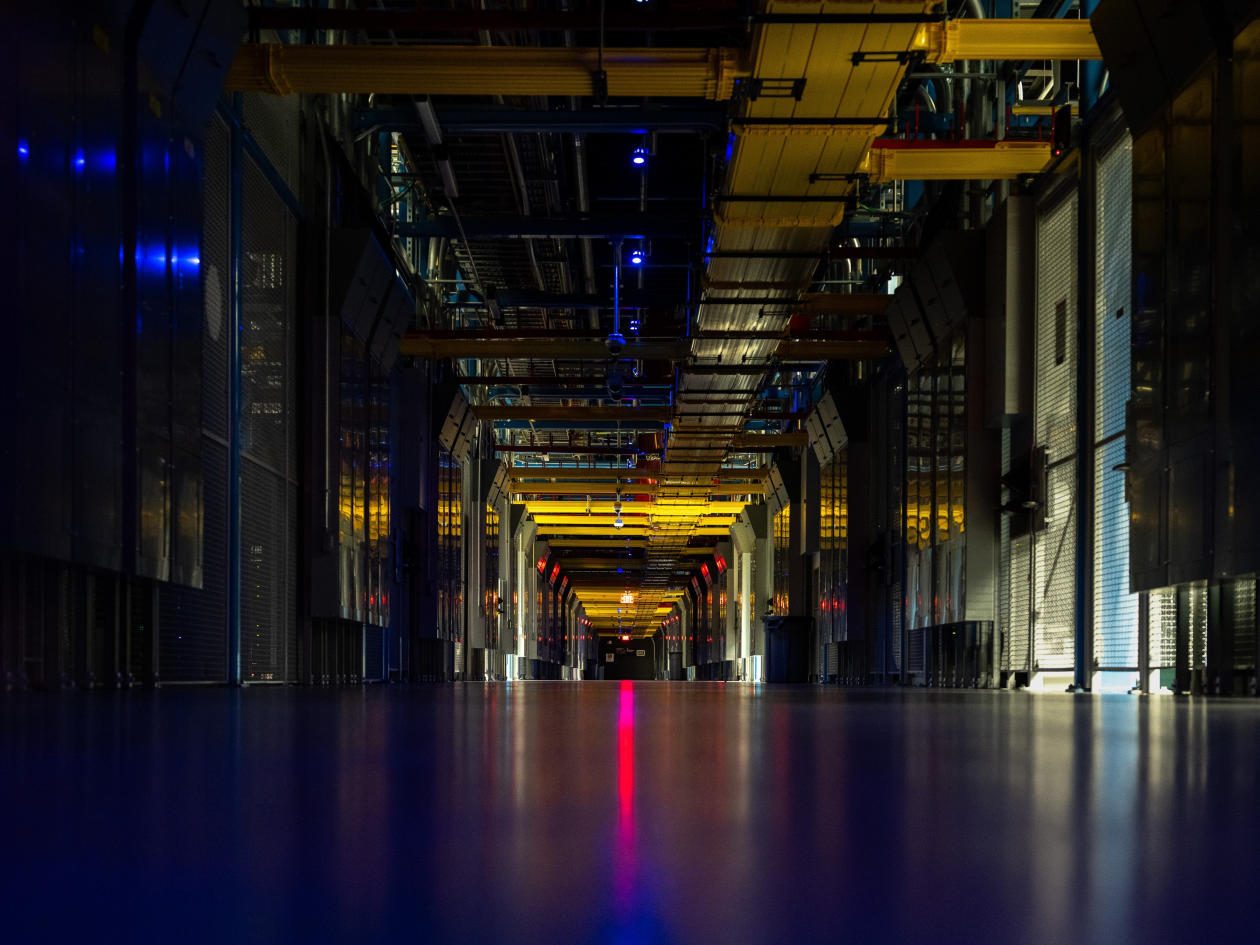
The drive to find on-site solutions is part of tech companies’ desperate hunt for electricity to power AI, and a solution designed for speed. Jungho Kim for WSJ
One project opting to forgo a grid connection altogether is a Meta Platforms META 0.23%increase; green up pointing triangle data-center campus in Ohio. Regulators in July approved a plan by pipeline company Williams to build on-site natural-gas power. Williams has said it would spend about $1.6 billion on power and pipeline infrastructure for the Columbus-area site as part of the 10-year deal.
In Oklahoma, Gov. Kevin Stitt is clamoring for a piece of the action. His state advertises cheap electricity and, as needed, abundant natural-gas supplies for those with the money for a DIY power plant. State lawmakers passed a bill earlier this year to let companies build their own power. The move came as AI data centers are pushing into rural regions as they seek thousands of acres of land near natural-gas and transmission lines.
“I don’t want to play Mother, May I? Can you generate power for me? Is it going to take seven years to connect to the grid? I need a gigawatt of power for AI,” Stitt mused in an interview. “These factories are big now. So now, grab yourself a couple of turbines. You can make your own power in Oklahoma.”
A handful of developers have shown interest, including Citizen Capital and Lightfield Energy, which have proposed a $3.5 billion data-center and industrial project in Chickasha.
Billy Sorenson, Lightfield’s founder, has developed and built solar projects for the past 15 years but said only natural gas has the power density to meet AI demand.
“All roads point to natural gas,” he said. The site design will include a lot of smaller turbines, battery storage and diesel generators for backup in case there’s ever a problem with the gas supply, he said.
A dearth of construction
Years of flat power-demand growth mean the number of natural-gas projects in the construction pipeline is small. The cost of building a new natural-gas power plant, meanwhile, has tripled over the past few years by some estimates.
Developers plan to deliver fewer than 20 gigawatts of natural-gas-powered projects this year through 2027, according to a Wall Street Journal analysis of data reported by power generators to the federal government.
Hugh Wynne, an analyst with Sector & Sovereign Research, predicts the dearth of construction will limit data-center growth.
Texas is seeing such rapid data-center, crypto and industrial growth that its grid operator expects peak electricity demand to increase 62% by the end of the decade—roughly the equivalent of adding all of California. The state is trying to persuade power companies to come to the Lone Star State to build or upgrade reliable generation, especially natural gas.
So far projects that would add more than a gigawatt of power have taken up officials’ offer of low-interest state-backed loans, but several others dropped out this year citing rising costs and supply-chain delays.
The gas projects moving forward in Texas and elsewhere are ones that likely secured equipment and locked in prices years ago, said Corianna Mah, an analyst with Enverus.
Complicating the picture further, most of the recent investment nationally has focused on renewable energy. About 214 gigawatts of large-scale solar, wind and battery projects are under construction or in various stages of planning, about two-thirds of what is currently operating in the U.S. for those technologies, according to government data.
Analysts, however, expect spending on wind and solar to drop and project cancellations to rise because they are set to lose key federal tax benefits under Trump’s tax-and-spending law. The president and his team argue clean-energy projects don’t provide the round-the-clock power generation needed to meet AI demand and have promised to make permitting more difficult for wind and solar. Wind and solar developers say every available electron will be needed to help meet demand, and they can deliver quickly.
Already, at least $22 billion in new factories and electricity projects have been canceled or scaled back this year, according to data tracked by advocacy group E2, including everything from offshore wind to battery factories. The Energy Department is slashing another nearly $24 billion of funding for early-stage climate projects.
Instead, the administration is boosting fossil fuels by opening swaths of federal land to oil and gas drilling and coal mining, approving new terminals to export natural gas, proposing to ax environmental regulations and offering $625 million to upgrade coal plants.
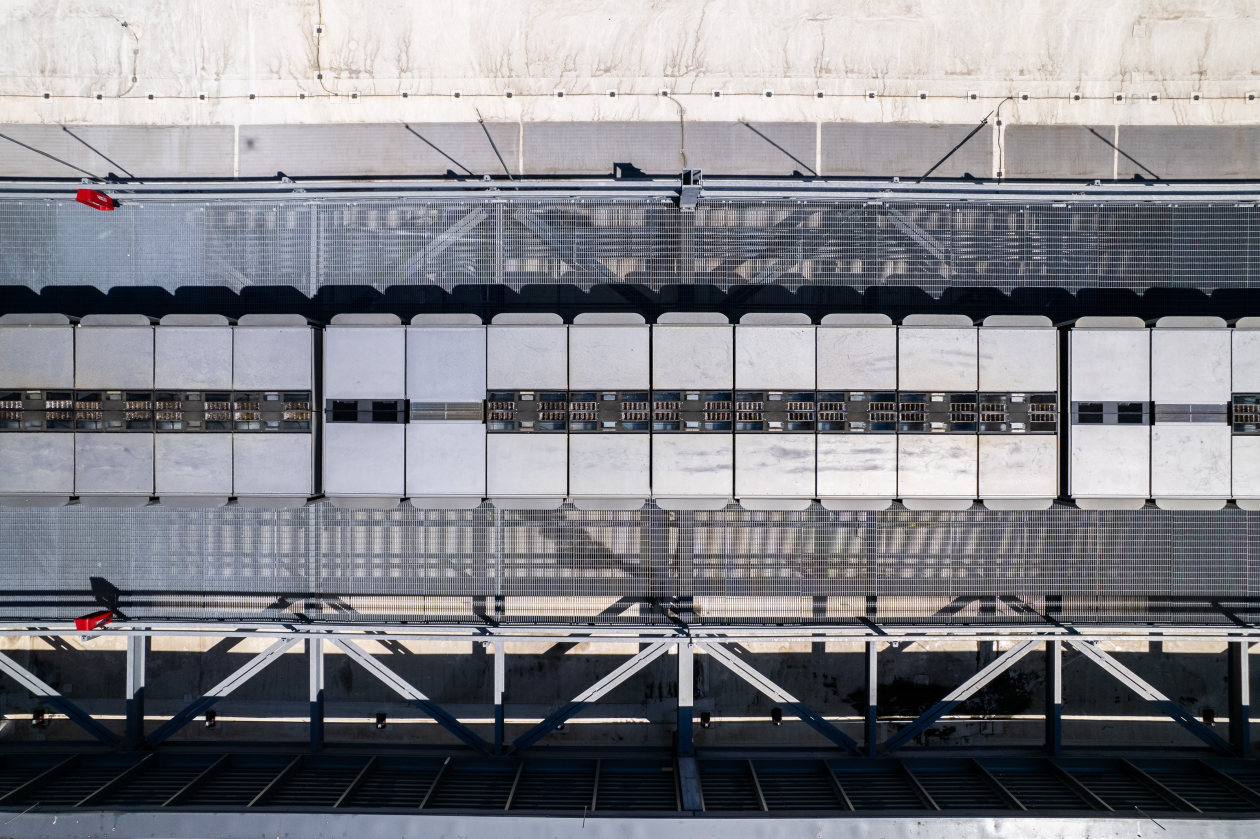
Most data centers eventually want to connect to the U.S. power grid, but they expect the supply crunch to last at least several years. Jungho Kim for WSJ
Erik Lensch, CEO of Leyline Renewable Capital, said his company paused considering new projects in the spring. Leyline lends to developers and has about 18 gigawatts of battery storage, solar and data-center projects in the works. Given lengthy grid interconnection, higher interest rates and the looming end of renewable energy tax credits, the company is focused on what can be delivered in the next few years.
“We made the decision earlier this year to strategically just focus our capital on the developers and the projects that we have,” Lensch said. “The appetite for any kind of early-stage investing is just really not there right now.”
Data centers and the companies giving them a power boost are preparing for a supply crunch that could last a while.
Equinix has been signing agreements in the U.S. and Europe with developers of small modular nuclear reactors, which haven’t yet delivered projects.
“We don’t know exactly where we’re going to use it, but we know we have a multigigawatt planned development for the coming handful of years,” said Raouf Abdel, executive vice president of global operations at Equinix. “We want as much flexibility in our power supply as we can get.”
Caterpillar CAT -0.64%decrease; red down pointing triangle, which has long provided power in remote locations for mining and oil-field operations, is seeing rising demand for its smaller turbines and reciprocating engines.
“Customers are saying, ‘Hey, can you help us bridge the two to three years until we can get a utility connection?’” said Jason Kaiser, group president of energy and transportation at Caterpillar. “That’s a new and growing opportunity for us.”
The company is spending $725 million to increase capacity at a large engine factory in Indiana, as power generation makes up the biggest part of company growth. The engines have traditionally been used for backup or emergency power, while the smaller turbines have been used at power plants, for pumps and compressors in the oil field and as jet, marine or train engines.
Mark McDougal, co-founder of Joule Capital Partners, plans to use Caterpillar equipment with battery storage at a huge data-center project in Utah located on part of a commercial farm that his family has owned for decades.
It’s designed so that it can connect to the grid later, McDougal said, “but we’re not relying on that.”
Write to Jennifer Hiller at jennifer.hiller@wsj.com
Corrections & Amplifications
A chart showing growth in U.S. energy peak demand is measured in gigawatts. An earlier version of the chart incorrectly used megawatts. (Corrected on Oct. 16) A chart showing data centers and transmission lines in the continental U.S. notes data centers by megawatts. An earlier version of the chart incorrectly used the symbol for milliwatts. (Oct. 17)
Appeared in the October 17, 2025, print edition as 'Data Centers Build Their Own Power'.